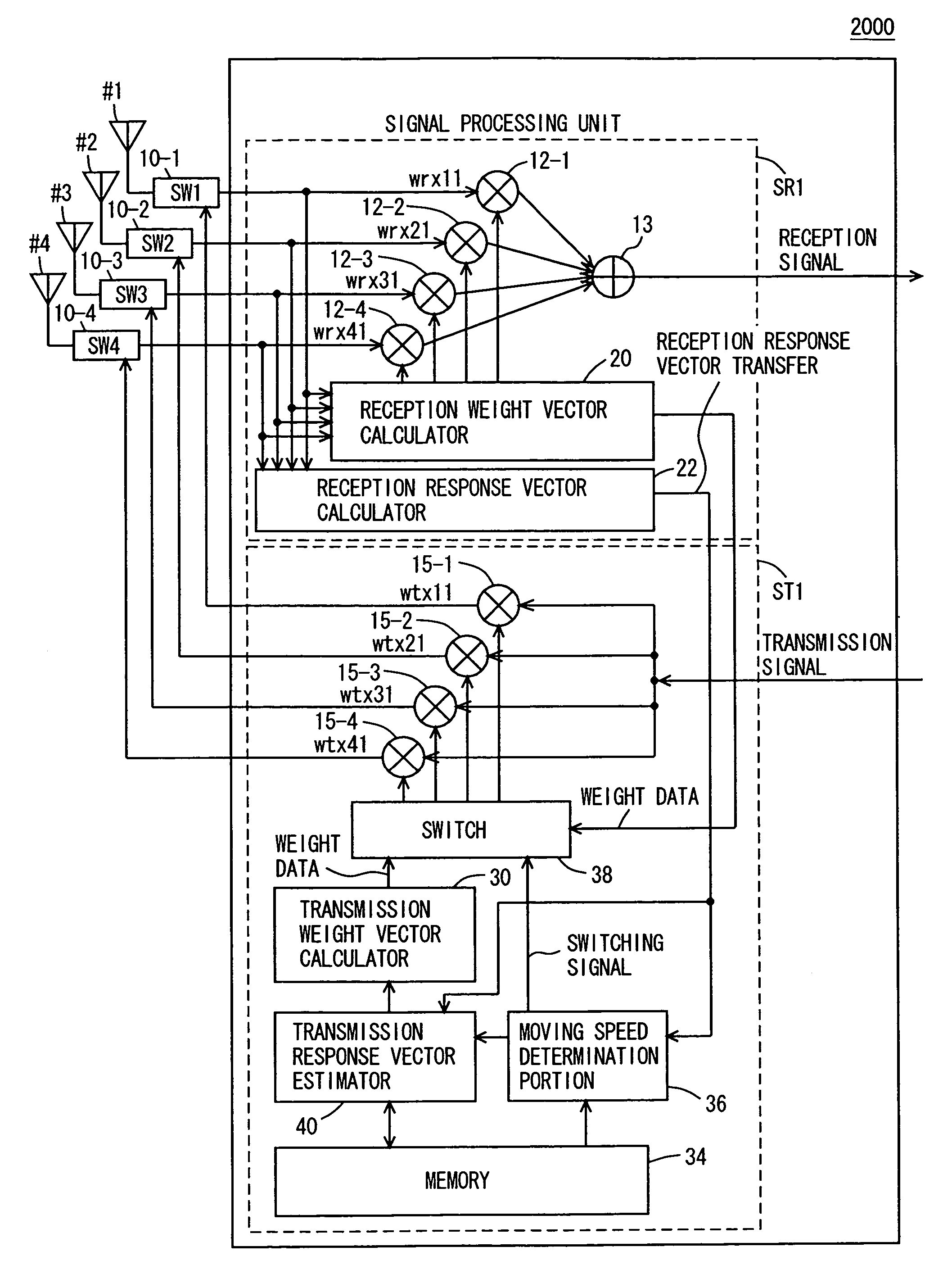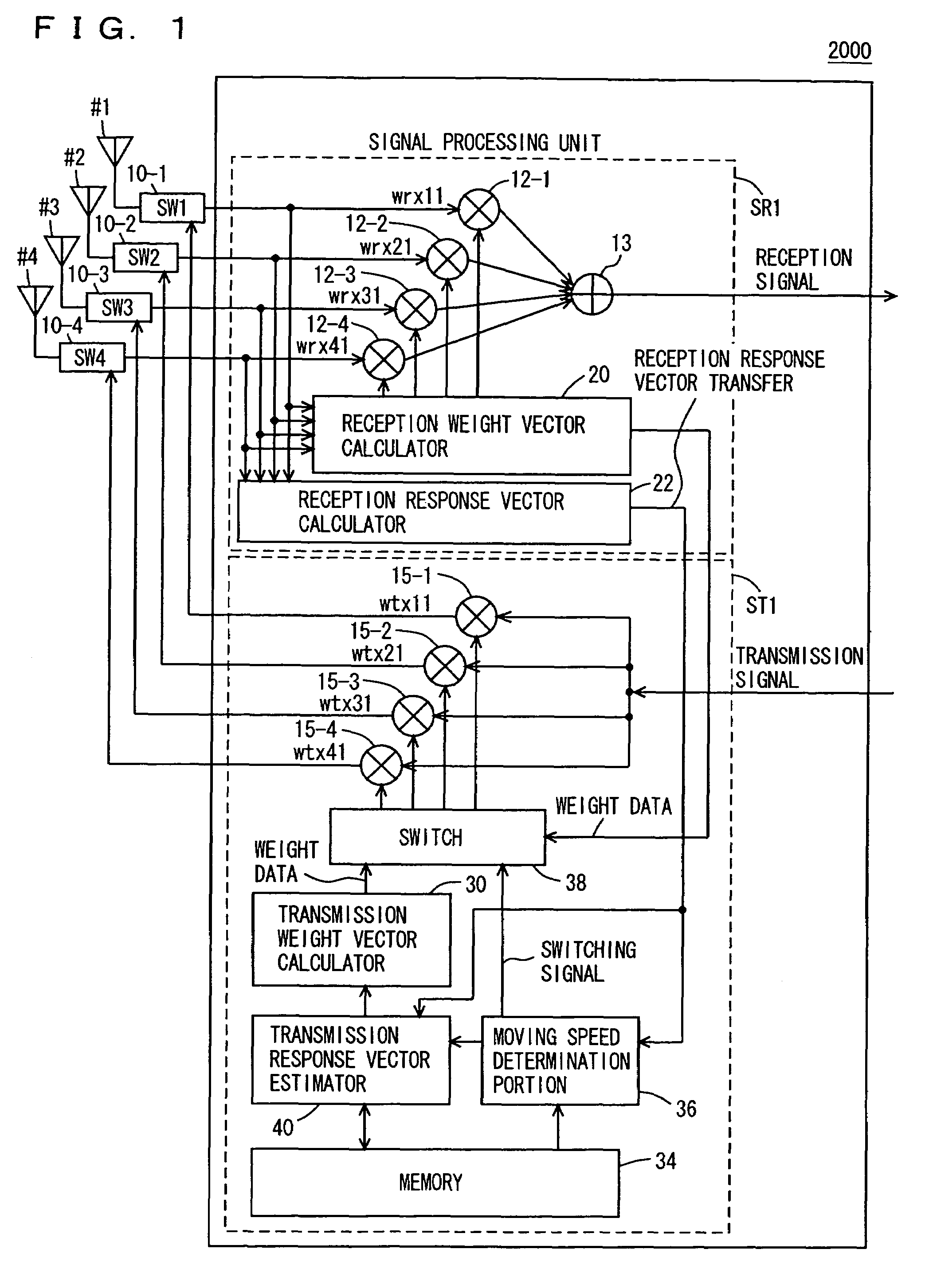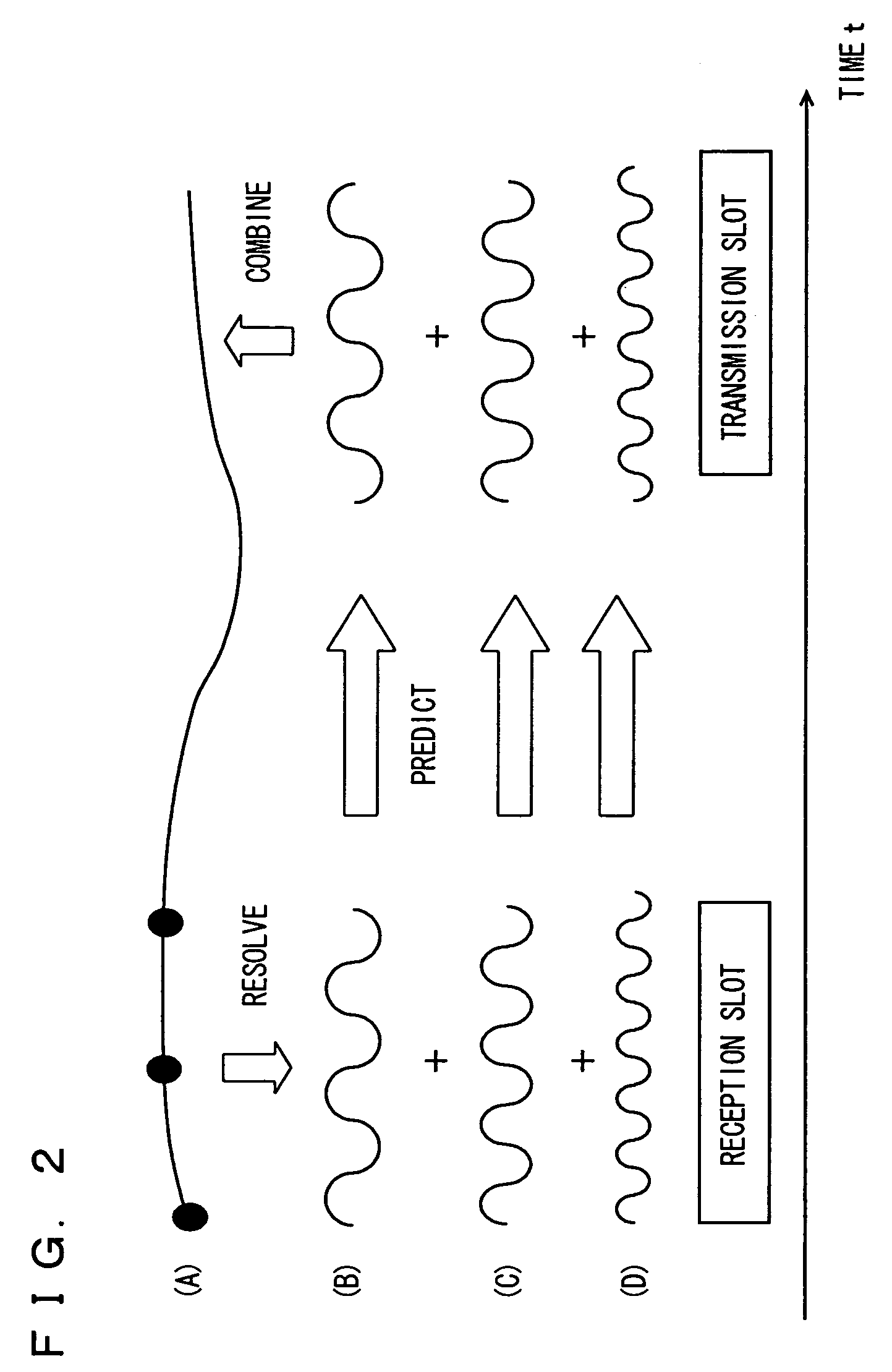Radio base system, transmission directional control method, and transmission directional control program
a transmission directional control and radio base station technology, applied in multiplex communication, wireless communication, polarisation/directional diversity, etc., can solve the problem of deterioration of transmission directivity from the base station, large deviation of extrapolation results from the actual time waveform of the reception response vector, and error between
- Summary
- Abstract
- Description
- Claims
- Application Information
AI Technical Summary
Benefits of technology
Problems solved by technology
Method used
Image
Examples
Embodiment Construction
[0050]In the following, embodiments of the present invention will be described in detail with reference to the figures. It is noted that the same reference characters refer to the same or corresponding components in the figures, and description therefor will not be repeated.
[0051]Before describing the embodiment of the present invention, estimation of a transmission response vector using a conventional extrapolation processing, as well as control of transmission directivity in the base station will initially be described.
[0052]FIG. 5 is a functional block diagram for functionally illustrating a configuration of a base station 1000 for estimating a transmission response vector with the conventional extrapolation processing performed with software by a digital signal processor (DSP).
[0053]In the configuration shown in FIG. 5, in order to identify two users PS1 and PS2, four antennas #1 to #4 are provided. Here, more generally, N antennas (N: natural number) may be provided.
[0054]In ba...
PUM
 Login to View More
Login to View More Abstract
Description
Claims
Application Information
 Login to View More
Login to View More - R&D
- Intellectual Property
- Life Sciences
- Materials
- Tech Scout
- Unparalleled Data Quality
- Higher Quality Content
- 60% Fewer Hallucinations
Browse by: Latest US Patents, China's latest patents, Technical Efficacy Thesaurus, Application Domain, Technology Topic, Popular Technical Reports.
© 2025 PatSnap. All rights reserved.Legal|Privacy policy|Modern Slavery Act Transparency Statement|Sitemap|About US| Contact US: help@patsnap.com



